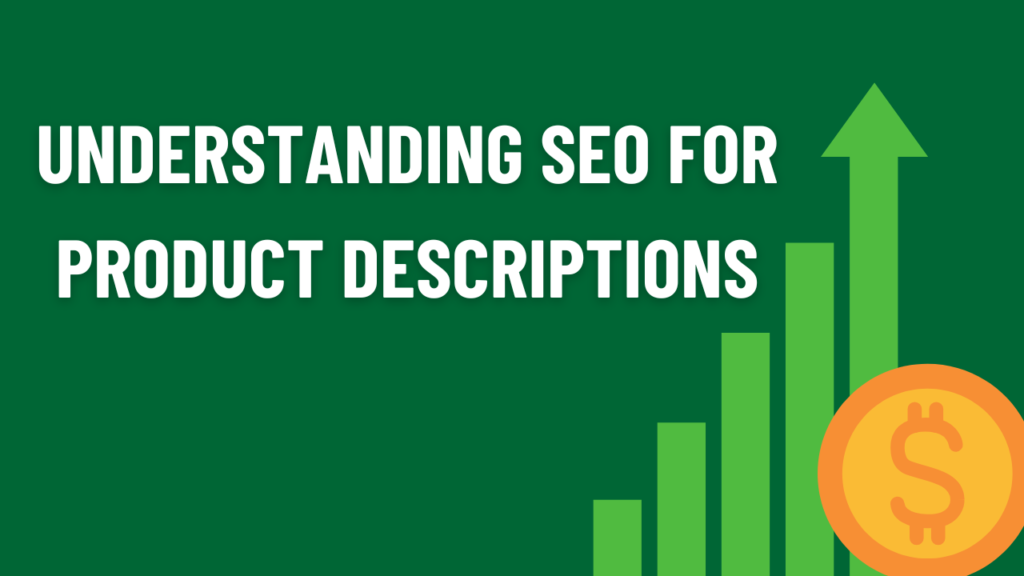
How to Create SEO Product Description Templates in Bulk
Discover how to streamline your eCommerce content strategy with SEO product description templates. This blog post guides you through creating scalable, keyword-optimized product descriptions in bulk—helping you save time, maintain consistency, and boost search engine visibility across your product listings.
Table of Contents
Introduction
Let’s face it—if you’re running an eCommerce store with hundreds or thousands of products, writing SEO-friendly product descriptions one by one is a productivity nightmare. That’s where bulk templates come to the rescue. In this guide, you’ll learn how to create effective, optimized product description templates that help you rank better and sell more—without burning out your content team.
Understanding SEO for Product Descriptions
What is an SEO Product Description?
An SEO product description is a keyword-optimized summary that explains what a product is, why it’s valuable, and how it solves a customer’s problem—all while helping search engines understand and index your product page.
Key Elements:
- Primary and secondary keywords
- Clear, engaging language
- Proper structure with headers and lists
- Meta information compatibility
Benefits of Using Templates for SEO Product Descriptions
1. Consistency Across the Board
Uniform tone and format across your product pages help maintain brand identity and improve user trust.
2. Time and Cost Efficiency
Write once, deploy many. Templates slash writing time from hours to minutes per product.
3. Reduces Errors
Fewer typos, fewer inconsistencies—especially if you’re importing via CMS tools.
Preparing for Bulk Template Creation
Keyword Research at Scale
Use tools like SEMrush, Ahrefs, or Google Keyword Planner to find long-tail keywords for product categories.
Product Categorization
Group similar products together for reusable templates.
User Personas
Tailor templates for your target audience—whether it’s budget-conscious shoppers or luxury buyers.
Key Components of a High-Performing Product Description
Product Title with Keyword
Use your focus keyword naturally in the title.
Feature List with Bullets
Keep features scannable. Bullet points improve readability and engagement.
Benefits-Oriented Copy
Don’t just describe the product—tell the customer what’s in it for them.
Technical Specifications
Essential for niche buyers and B2B segments.
Use Case or Scenario
Help customers visualize using your product.
Call to Action (CTA)
“Add to Cart” or “Order Today” isn’t enough. Make it punchy and relevant.
Creating a Template Structure
HTML Template Basics
html
CopyEdit
<h1>{Product_Name}</h1>
<p>{Intro_Keyword_Paragraph}</p>
<ul>
<li>{Feature_1}</li>
<li>{Feature_2}</li>
</ul>
<p>{Benefits_Section}</p>
<p>{Technical_Specs}</p>
<p><strong>{Call_To_Action}</strong></p>
Variable Fields
Create placeholders like {Product_Name}, {Feature_1} for easy substitution.
Sample Template Snippet
“The {Product_Name} is perfect for {User_Type}, featuring {Feature_1} and {Feature_2} to make your life easier. Ready to elevate your experience?”
Tools to Automate Bulk Content Creation
Google Sheets
Use formulas to combine fields into full descriptions.
ChatGPT & AI Writers
Train AI with templates and product data to generate unique descriptions fast.
CSV Import + CMS
Use WooCommerce, Shopify, Magento, or custom APIs to upload descriptions in bulk.
Step-by-Step Guide to Bulk Generation
Step 1 – Spreadsheet Setup
Columns: Product Name, Features, Benefits, CTA, Keywords.
Step 2 – Generate Descriptions
Use formulas or ChatGPT to populate the text based on template logic.
Step 3 – Validate for SEO
Check keyword density, length, and meta compatibility.
Step 4 – Upload to Website
Import CSV via CMS or use a custom API script.
Common Mistakes to Avoid
- Copy-pasting the same text across products (Google hates duplicate content).
- Overusing keywords unnaturally.
- Forgetting about mobile readability and UX.
Optimizing Templates for UX
- Use short paragraphs and bullets.
- Add icons or images where possible.
- Test how it looks on mobile devices.
A/B Testing Product Descriptions
Test:
- Short vs. long descriptions
- Benefits-first vs. features-first copy
- Different CTAs
Track:
- Bounce rate
- Add-to-cart actions
- Conversion rates
Keeping Templates Updated with SEO Trends
SEO isn’t static. Stay updated with Google’s guidelines and refresh older templates to match current best practices.
Scaling SEO Content with AI + Human Collaboration
AI is great for bulk generation—but human editors add polish, emotional appeal, and ensure brand alignment.
Case Study: From 50 to 5,000 Products in 2 Months
An eCommerce fashion brand used AI-generated templates and CMS import features to scale from 50 to 5,000 SEO-rich product pages. The result? A 3x boost in organic traffic and 40% higher conversions.
Conclusion
Creating SEO product description templates in bulk is the secret weapon for growing eCommerce sites. When done right, it saves time, boosts rankings, and delights users. Combine structure, smart automation, and human touch—and you’ve got a scalable SEO engine that works.
Frequently Asked Questions
Aim for 100–300 words, depending on the product complexity.
Absolutely! Just make sure to edit for clarity and brand tone.
Use a keyword-rich intro, bullet features, and strong CTA.
Include dynamic fields and varied phrases for uniqueness.
Review every 6–12 months or after major SEO updates.
Table of Contents
Popular Posts
-
 Affordable Technical SEO Audit for Small Business: A Complete Guide26 Jun 2025 Blog
Affordable Technical SEO Audit for Small Business: A Complete Guide26 Jun 2025 Blog -
 How to Get an Affordable Technical SEO Audit for Small Business27 Jun 2025 Blog
How to Get an Affordable Technical SEO Audit for Small Business27 Jun 2025 Blog -
 The Ultimate Local SEO Audit Checklist for Startups28 Jun 2025 Blog
The Ultimate Local SEO Audit Checklist for Startups28 Jun 2025 Blog -
 Local SEO Audit Checklist for Startups: A Beginner’s Guide28 Jun 2025 Blog
Local SEO Audit Checklist for Startups: A Beginner’s Guide28 Jun 2025 Blog -
 Top On-Page SEO Audit Steps for Service Websites Every Business Should Know29 Jun 2025 Blog
Top On-Page SEO Audit Steps for Service Websites Every Business Should Know29 Jun 2025 Blog -
 Technical SEO for WordPress: The Ultimate Beginner’s Guide01 Jul 2025 Blog
Technical SEO for WordPress: The Ultimate Beginner’s Guide01 Jul 2025 Blog -
 The Impact of On-Page SEO Audit Steps for Service Websites on UX01 Jul 2025 Blog
The Impact of On-Page SEO Audit Steps for Service Websites on UX01 Jul 2025 Blog -
 Technical Mobile SEO Audit Tips for Developers02 Jul 2025 Blog
Technical Mobile SEO Audit Tips for Developers02 Jul 2025 Blog -
 Complete SEO Backlink Audit Guide for Better Google Rankings03 Jul 2025 Blog
Complete SEO Backlink Audit Guide for Better Google Rankings03 Jul 2025 Blog -
 Boost Your Rankings with Technical SEO for WordPress01 Jul 2025 Blog
Boost Your Rankings with Technical SEO for WordPress01 Jul 2025 Blog






